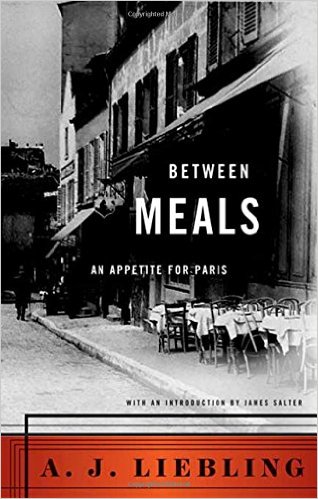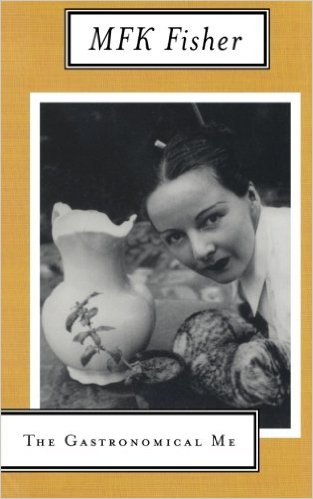 I have been a professional film critic for more than a decade, but anyone who’s ogled my personal library knows that my most ardent cultural passion is actually food writing – not just cookbooks but essays about restaurants, markets, cooking, and foraging. In short, I like to read about eating. Everything lives inside a great piece of food writing: history, science, art, crafts, politics, culture, even our connection to the divine. The best part? In most cases reading about great meals confers less guilt and more pleasure than the meals themselves – especially when rendered by the writers I’ve selected below.
I have been a professional film critic for more than a decade, but anyone who’s ogled my personal library knows that my most ardent cultural passion is actually food writing – not just cookbooks but essays about restaurants, markets, cooking, and foraging. In short, I like to read about eating. Everything lives inside a great piece of food writing: history, science, art, crafts, politics, culture, even our connection to the divine. The best part? In most cases reading about great meals confers less guilt and more pleasure than the meals themselves – especially when rendered by the writers I’ve selected below.
A.J. Liebling
“The primary requisite for writing well about food is a good appetite,” intoned New Yorker writer Liebling, and he knew of what he spoke. Gluttony was the name of his game, and he detailed his heaping boards with the same zeal that he applied to city life and boxing, his other signature topics. In the memoir Between Meals, he describes favorite dinners of his youth. A typical menu: figs, artichokes, three kinds of cheeses, oysters, ham, “sausage in crust,” clam chowder, a peck of steamers, cognac, bay scallops, sautéed soft-shelled crabs, ears of fresh-picked corn, a swordfish steak, a pair of lobsters, a Long Island duck, boar, a bottle of champagne, and a bottle of Bordeaux. In Liebling’s extravagant prose, you don’t just discover your appetite. You discover a past that did not fear the future.
Ruth Reichl
In memoirs, essays, and fiction, the former New York Times restaurant critic and Gourmet editor-in-chief always has revealed a palate that is refined but unfussy – a palate reflecting the new conventions established by her and other Baby Boomers. The Berkeley hippies with whom she consorted, the marital and extramarital love she shared, the Manhattanite mother she barely survived, the fabulous friends and frenemies she counts on both coasts, and the fabulous and not-so-fabulous restaurants at which she’s dined on nearly every continent: All feed Reichl’s unique sensibility, which in turn feeds us with rich, carefully curated prose. Comfort Me With Apples, indeed.
Calvin Trillin
More than any other writer on this list, Trillin is a collector – a list maker, an enthusiast, and generally the sort of fellow who thrills and, you should forgive the pun, trills about culinary categories that he was the first high-brow writer to take seriously. These days most food writing emanates from the school of Trillin – mostly unknowingly, alas – but when he started enthusing about the very best hot dogs, chili, and, oh gosh, pie, most food writing this side of Laura Ingalls Wilder’s Farmer Boy eschewed such pedestrian topics. Lest I paint Trillin as a mere middle-of-the-road apologist, know that his great love of food, like his diction, is as discerning as it is democratic, and that it’s founded on a great love for humanity in general. Word to the wise: Do not read About Alice, his memoir about his deceased wife, dining partner-in-crime, and best friend, unless you are prepared to cry the tears of a thousand onions.
David Lebovitz
A gay pastry chef who cut his teeth in Alice Waters’s California kitchens, Parisian transplant David Lebovitz suffers no fools in or out of the kitchen. Never nice but often kind-hearted, his memoirs and cookbooks, especially The Sweet Life in Paris, balance his salty sensibilities with glorious descriptions of desserts: thick, dark hot chocolate; truffles; croissants; and, yes, the perfect madeleine. Threaded among handy shopping tips, recipes, and enough sugar to trigger a diabetic coma lie great truths about what it means to be an American as well as an American emigre.
Laurie Colwin
When she died suddenly at age forty-eight, Colwin was greatly mourned not only for her novels, essays, and short stories but for her absolutely amazing books about food, especially the seminal tome Home Cooking. An East Coast Jewish girl who never forgot her upper-middle-class roots though she was a 1960s rebel through and through, she wrote beautifully about simple staples rendered well – roasted chickens, lemon pasta, and, oh yes, chopped white fish. Not only did she instruct us about what to eat, she told us where, when, and how to eat, as well. Cozy and efficient, her wisdom still sparkles. Really, it winks.

MFK Fisher
She wrote novels, children’s books, a screenplay, travelogues, and, above all, essays and memoirs about food. She was a single mother and a working journalist at a time when women were rarely allowed their own banking account, let alone their own desires, and she was an unrepentant sensualist who enjoyed her lovers almost as much as she enjoyed her food and drink. To Fisher, every meal presented an opportunity for communion, especially with herself, and in her crisp prose she schooled us on the dual pleasures of eating: necessity and invention. Whether the native Californian was writing of oysters in Paris, frugality during wartime, or final meals with dying spouses, she never failed to capture the collective unconscious (culinary and otherwise) with a scope and skill that might have impressed Jung himself. In 1963, no less than W. H. Auden called her “America’s greatest writer,” and, boy, was he right. Eminently quotable, eternally hungry, and beautifully bemused, Mary Frances is one of my favorite writers, period. Start with The Gastronomical Me and you’ll never stop.
This was originally published on Signature.
